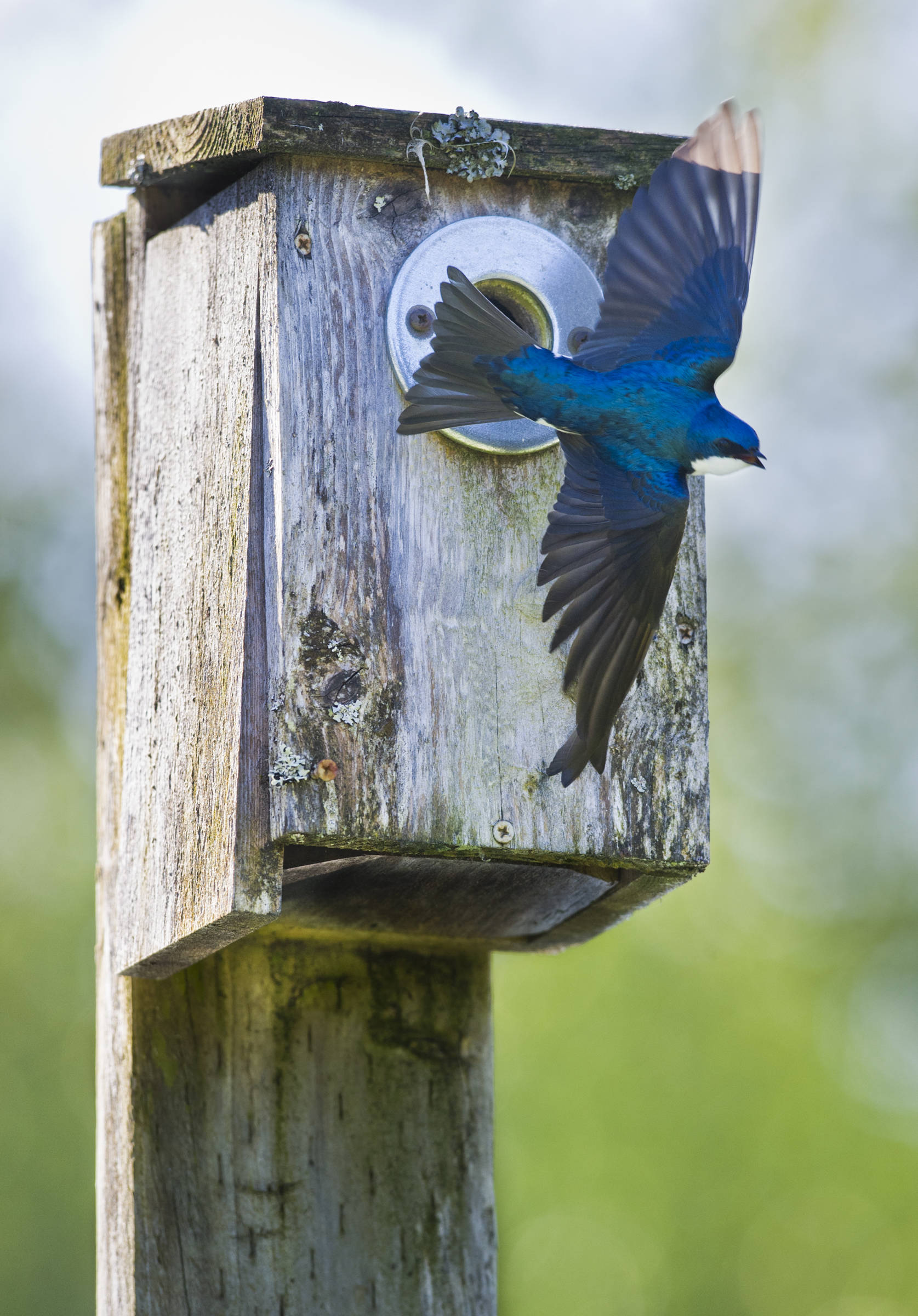An annual project by the Juneau Audubon Society to provide boxes for tree swallows to nest in the City and Borough of Juneau had a successful year gathering data, even as the population of birds continues to shrink.
“The problem is that all insect-eating birds across North America are declining,” said Brenda Wright, a naturalist with the JAS.
More than 1 billion birds have been lost in the past 30 years in North America alone, Wright said, according to the Cornell Lab of Ornithology. The project here is to provide homes for migratory tree swallows, allowing members of the JAS to gather data about brood health and sizes.
“We have to get out there and get these boxes up before the birds arrive,” Wright said. “The only major problem we usually have is that the ground is still frozen.”
Wright, along with volunteers Jessica and Cody Millsaps, presented their data from the year and explained some of the difficulties and successes they’d experienced with the project this year, from driving rebar for the nests into frozen ground to finding the best location for the nests. The JAS also collects data related to the birds to form a more accurate picture of trends and populations by checking the boxes every few days and taking pictures to document the nesting.
“The Mendenhall Peninsula is a very beautiful place, but it is very swampy,” Cody Millsaps said. “Over the last few years we’ve seen a huge drop in swallow population, and we’d like to find out why.”
The project in Juneau was started in 2015, following in the footsteps of other programs in Alaska. Of the 61 boxes in and around Lemon Creek, North Douglas and the Mendenhall Peninsula, 40 of them hosted birds this year. Of those, there were 198 eggs hatched, 195 of which fledged — a 98% rate, which is very good.
“Fairbanks and Anchorage are the biggest, with over 100 boxes, and the oldest, with more than 15 years (of tenancy),” Wright said.
Juneau has 61 boxes up, made possible by donations, labor from children in juvenile detention, and a $400 grant from the Alaska Audubon Society, Wright said.
Once the boxes are up, which needs to be accomplished before the tree swallows migrate north around April 15 each year, volunteers will periodically traipse into the marsh to record a number of metrics for each box, said Jessica Millsaps. Metrics include location, time, date, weather, box number, number of eggs laid, number of adult birds and their behavior, and other birds seen while collecting data.
“You can see how important it is to move the boxes to areas that are better suited to the tree swallows,” Wright said. During winter, the boxes come down for cleaning and refitting as necessary, before going back up next spring.
Factors people can help reduce to promote bird populations include keeping cats indoors, reducing pesticide use, reducing plastic use, and sharing knowledge of birds when one can. One can also reduce window strikes by moving feeders away from windows, and removing plants from windows.
Want to help next year?
The JAS is seeking an intern for next year as well to assist with the project; those interested can apply on the Juneau Audubon Society website.
• Contact reporter Michael S. Lockett at 757-621-1197 or mlockett@juneauempire.com.

